ABOUT PHILATELY….
Philately, the study of postage stamps, stamped envelopes, postmarks, postcards, and other materials relating to postal delivery. The term philately also denotes the collecting of these items. The term was coined in 1864 by a Frenchman, Georges Herpin, who invented it from the Greek philos, “love,” and ateleia, “that which is tax-free”; the postage stamp permitted the letter to come free of charge to the recipient, rendering it untaxed. The first postage stamps for the prepayment of letter postage were issued in England in 1840.
This is a survey of the postage stamps and postal history of Sri Lanka, formerly known as
Ceylon.
Sri Lanka is an island country in South Asia, located about 31 km off the southern coast of India. After over two thousand years of rule by local kingdoms, parts of Sri Lanka were colonized by Portugal and the Netherlands beginning in the 16th century, before control of the entire country passed to Britain in 1815. A nationalist political movement arose in the country in the early 20th century with the aim of obtaining political independence, which was eventually granted by the British after peaceful negotiations in 1948. The country became a republic and adopted its current name in 1972.
Philately is the study of postage stamps and postal history. It also refers to the collection, appreciation and research activities on stamps and other philatelic products. Philately involves more than just stamp collecting or the study of postage; it is possible to be a philatelist without owning any stamps.[1] For instance, the stamps being studied may be very rare or reside only in museums.
The word “philately” is the English transliteration of the French “philatélie”, coined by Georges Herpin in 1864. Herpin stated that stamps had been collected and studied for the previous six or seven years and a better name was required for the new hobby than timbromanie (roughly “stamp quest”), which was disliked. The alternative terms “timbromania”, “timbrophily” and “timbrology” gradually fell out of use as philately gained acceptance during the 1860s. He took
the Greek root word -, meaning “an attraction or affinity for something”, and α ateleia, meaning “exempt from duties and taxes” to form “philatelie”.
What is the importance of philately?
But beyond their role as facilitators of communication, stamps themselves carry messages embedded in their usage and imagery. Functionally, stamps signify that appropriate payment has been made for the service of transporting a letter. Symbolically, stamps express meaning for a variety of actors.
British colonial stamps.
Mint British stamps for use in Ceylon depicting King George V.

A mint high value 100 Rupee key type stamp of Ceylon.
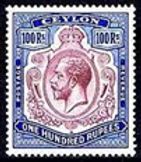
The first stamps for British Ceylon were issued on 1 April 1857. The stamp features a portrait of Queen Victoria and is brown in colour. It is a 6 pence value used to send a half ounce letter from Ceylon to England. Eight more stamps were issued in year 1857, all featuring the portrait of Queen Victoria. One of the 5 stamps that were issued on 23 April 1859 is considered to be the most valuable stamp in Sri Lanka: it is a 4 pence with a dark pink colour known as the ‘Dull Rose’.
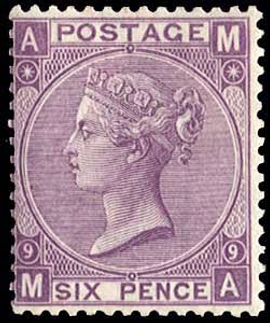
1857 Victoria on 6 pence
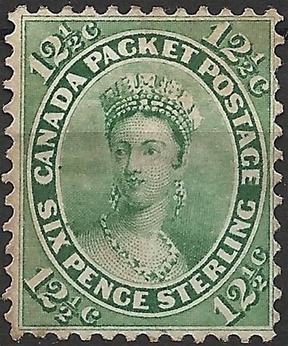
1859 Victoria on 1 sh 9 p – Cert. B.P.A.
Other souvenir sheets
On 10 February 1981, a four stamp Surcharged souvenir sheet on ‘Quadrupeds of Sri Lanka’ was issued. The 4 stamps in the sheet were surcharged at the issue. A practice of issuing souvenir sheets containing the Wesak stamps started from year 1981. On 21 October 1981 a souvenir sheet was issued to mark the Sri Lankan visit of Queen Elizabeth and was the first souvenir sheet issued to mark the visit of a distinguished foreign head of state.
On 2 December 1982 a souvenir sheet was issued to commemorate the 125th anniversary of the 1st postage Stamp of Sri Lanka. This was the 1st souvenir sheet of 2 stamps of different denominations; 50 cents and 2.50 rupees with a sheet value of Rs. 5. On 1 April 2007 to commemorate the 150th anniversary of the 1st postage stamp of Sri Lanka a
souvenir sheet was issued in both perforate and imperforate types. All the souvenir sheets issued so far were rectangular in shape. The first irregular shape souvenir sheet was issued on 22 May 2001 on ‘Seashells of Sri Lanka’ for the World Biodiversity Day. The sheet was in the shape of a seashell.
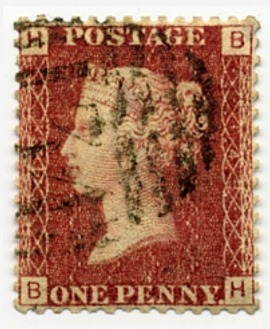
The Penny Red was used in the UK for many years (1841-1879), and comes in hundreds of variations which are subject to detailed study by philatelists.

Zeppelin mail from Gibraltar to Rio de Janeiro, Brazil via Berlin on the Christmas flight (12th South American flight) of 1934

A large stamp show (philatelic exhibition) at which collectors and dealers meet. Photograph of Spring Stampex 2011 stamp show at the Business Design Centre, Islington, London and taken on Saturday 26
February 2011. Showing stamp displays in the foreground and stamp dealers booths on the first floor. All the dealers are members of the Philatelic Traders Society (PTS). The post box is a working box installed for the show. Philatelic organizations sprang up soon after people started collecting and studying stamps. They include local, national and international clubs and societies where collectors come together to share the various aspects of their hobby. The world’s oldest philatelic society is the Royal Philatelic Society London, which was founded on 10 April 1869, as the Philatelic Society. In North America, the major national societies include the American Philatelic Society; the Royal Philatelic Society of Canada; and the Mexico- Elmhurst Philatelic Society, International.
Local clubs and societies have been established in many cities of the world. The International Philatelic Federation was formed in 1926 which is originally based in Zurich, Switzerland but is now known to be the world federation for philately.
History
Nineteenth century
As a collection field, philately appeared after the introduction of the postage stamps in 1840,[5][6] but did not gain large attraction until the mid-1850s. In the USA, early collectors of stamps were known as ‘stamp gatherers’. The United States Postal Service re-issued stamps in 1875 due to public demand for ‘old stamps’, including those from before the American Civil War.[7] Some authors[6] believe that the first philatelist appeared on the day of the release of the
world’s first postage stamp, dated to 6 May 1840, when the Liverson, Denby and Lavie London law office sent a letter to Scotland franked with ten uncut Penny Blacks, stamped with the postmark “LS.6MY6. 1840.” In 1992 at an auction in Zurich, this envelope was sold for 690 thousand francs.[8] Already in 1846, cases of collecting stamps in large numbers were known in England. However, without reason for collection, stamps at this time were used for pasting wallpaper. The first
Philatelist is considered to be a postmaster going by the name Mansen, who lived in Paris, and in 1855 had sold his collection, which contained almost all the postage stamps issued by that time. The stamp merchant and second-hand book dealer Edard de Laplante bought it, recognizing the definitive collector’s worth of the postage stamp.[9] Due to the boom in popularity and news of this transaction, stamp merchants like Laplante began to emerge. Towards the end of the 19th century stamp collecting reached hundreds of thousands of people of all classes. Even some states had collections of postage stamps, for example, England, Germany, France, Bavaria, and Bulgaria). In countries who held national collections, museums were built to dedicate that nation’s history with philately, and the first such appeared in Germany, France, and Bulgaria. Allegedly, the first of these museums housed the collection of the British Museum, curated by MP Thomas Tapling and bequeathed to the Museum in 1891. The Museum für Kommunikation Berlin also had an extensive collection of stamps. The largest collection of the time belonged to Baron Philipp von Ferrary in Paris.
As the number of postage stamp issues increased every year, collection became progressively difficult. Therefore, from the early 1880s, “collector experts” appeared, specializing their collection to only one part of the world, a group of nations, or even only one.
Twentieth century
Philately as one of the most popular types of collecting continued to develop in the 20th century. Along with the “Scott”, “Stanley Gibbons”, and “Yvert et Tellier” catalogs, the “Zumstein” (first published in Switzerland, 1909), and the “Michel” (first published in Germany, 1910) catalogs began publication. In 1934, the idea to celebrate an annual Postage Stamp Day was suggested by Hans von Rudolphi, a German philatelist.[11] The idea was adopted rapidly in Germany, and gained later adoption in other countries. Stamp Day is a memorial day established by the postal administration of a country and annually celebrated, which is designed to attract public attention to, popularize the use of, and expand the reach of postal correspondence, and contribute to the development of philately. In 1968, Cuba dedicated a postage stamp for Stamp Day with an image of G. Sciltian’s “El filatelista”. In 1926, the Fédération Internationale de Philatélie (FIP) was founded, where international philatelic exhibitions have been regularly organized since 1929. The first World Philatelic Exhibition in Prague was held between August and September 1962; in 1976, the FIP brought together national societies from 57 countries, which held over 100 exhibitions, and in 1987, over 60 countries entered the FIP. Since the middle of the 20th century, philately has become the most widespread field of amateur collecting, which was facilitated by:
• significantly expanded postal exchanges between countries,
• many countries’ post offices issuing:
• commemorative emissions,
• multicolor series of stamps devoted to history, the most important events
of our time, art, fauna, flora, sports, etc.;
• individual stamps, sheets (a sheet with one or more printed stamps and
inscription on the margins) and items intended specifically for
philatelists;
• widespread sale of collection signs of postage (including commissioned
ones), albums, stock books and other items of philately;
• publication of stamp catalogs;
• national and international exhibitions organized by philatelic societies,
domestic and international exchanges, philately propaganda through
specialized magazines and other periodicals.[14]
Philately magazines, at this time, were published as far east as Poland, and as far west as North America. In Canada, Canadian Stamp News was established in 1976 as an off-shoot to Canadian Coin News, which was launched about a decade earlier. Philately was largely advanced by the USSR and nations within its sphere of influence, and the United States, France, the UK, and Austria. The British Library Philatelic Collections and the postal museums in Stockholm, Paris, and Bern had unique national philately collections at that time, and among the famous private collections are those of the Royal Philatelic Collection, F. Ferrari (Austria), M. Burrus (Switzerland), A. Lichtenstein, A. Hind, J. Boker (USA), and H. Kanai (Japan). In the mid-1970s, national philately organizations and associations existed in most countries, and 150-200 million people were involved in philately during meetings established. Twenty-first century From 28 August to 1 September 2004, the World Stamp Championship was held for the first time in the history of world philately in Singapore.
Tharuka Dias

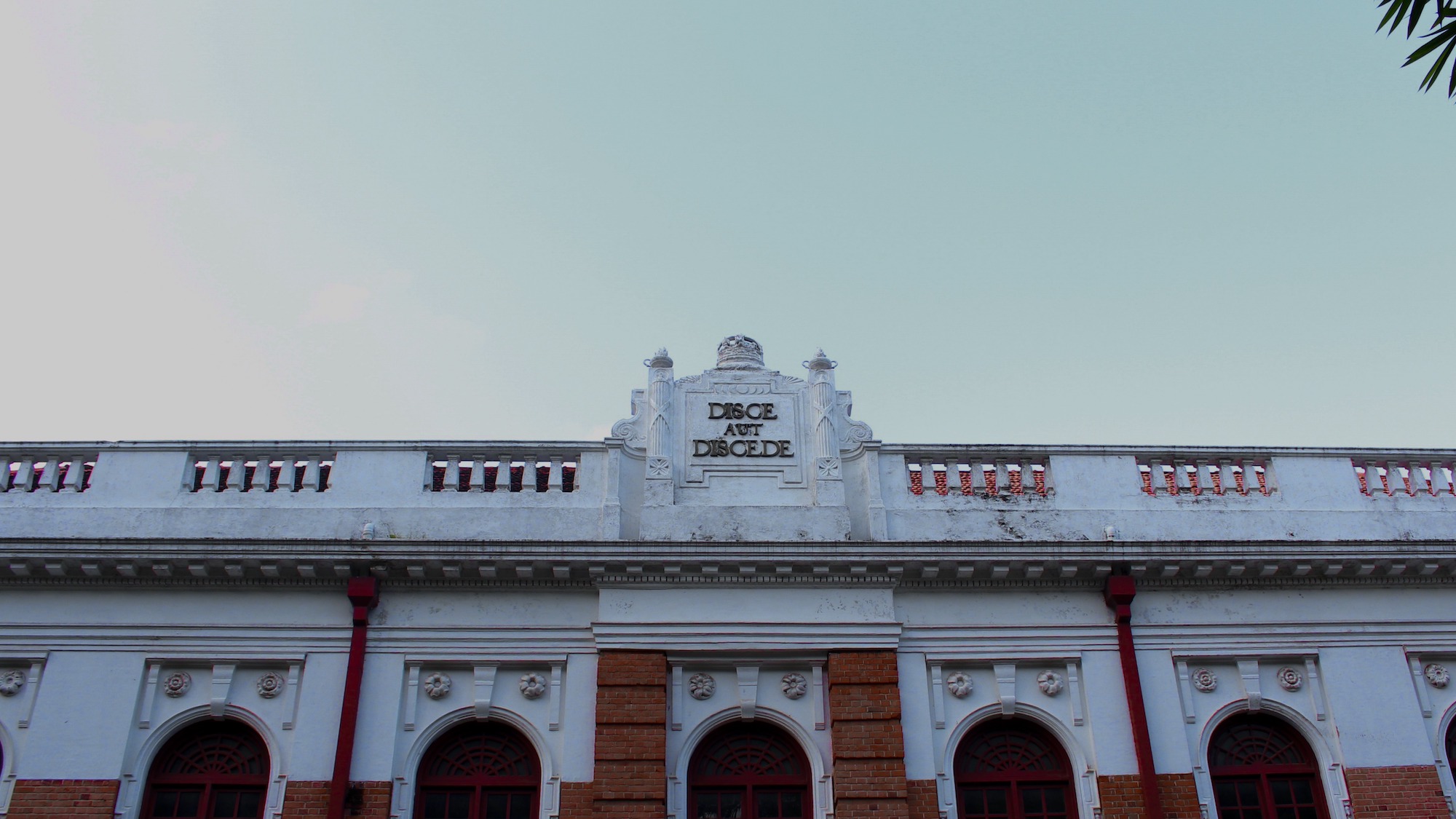

 Prefects
Prefects